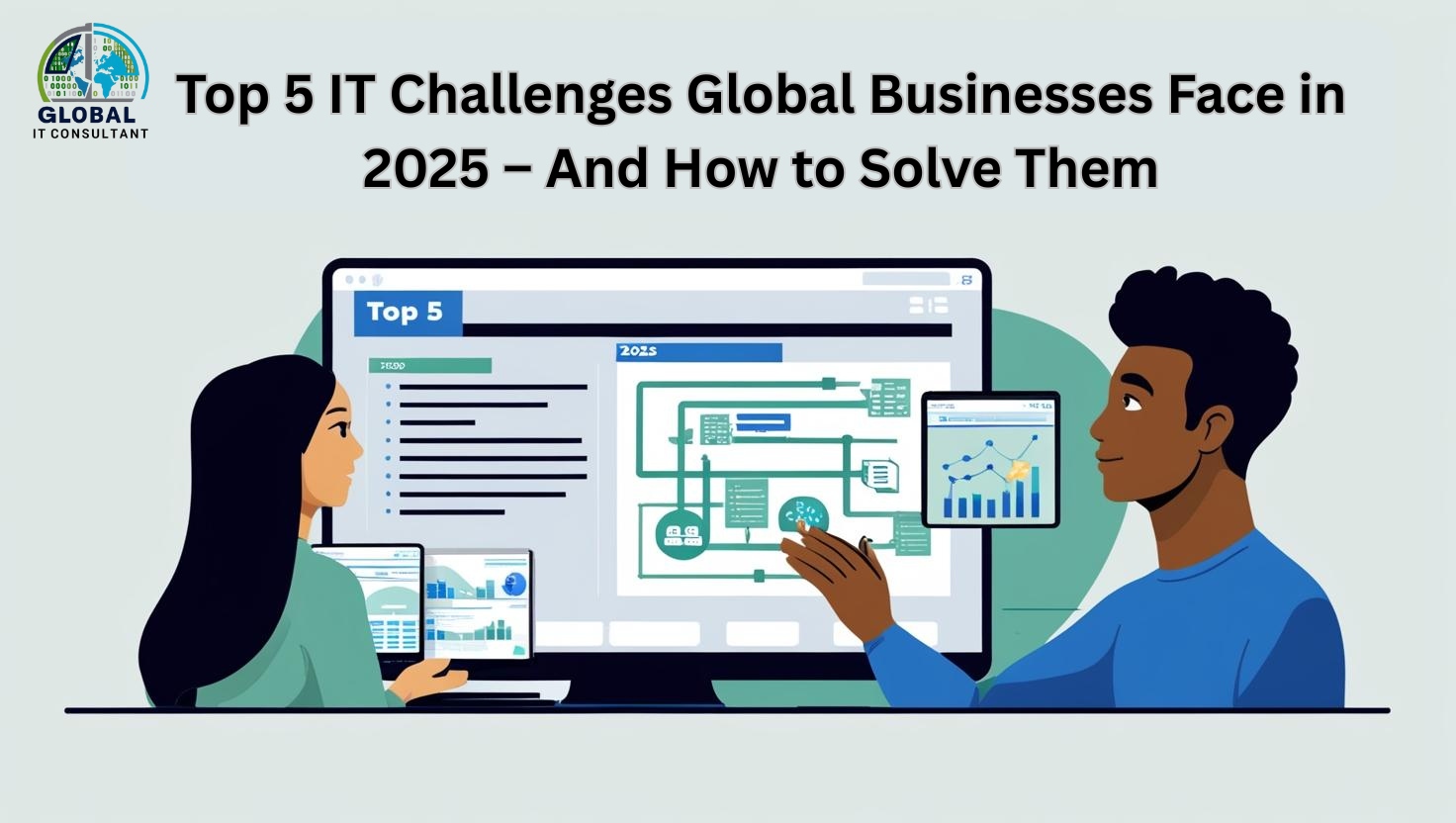In 2025, global businesses are undergoing unprecedented digital transformations, powered by AI, remote workforces, hyper-automation, and increasing cybersecurity risks. As technology evolves, so do the challenges. Ignoring them is no longer an option—understanding and preparing for these IT roadblocks is critical for resilience and long-term success.
Here are the top 5 IT challenges global organizations are facing in 2025—and practical strategies to overcome them.
1. Cybersecurity Threats are Evolving Faster than Defenses
The Challenge:
Ransomware, AI-powered phishing, deepfake scams, and supply chain vulnerabilities are outpacing traditional security models. With growing cloud dependencies and globally distributed teams, entry points for hackers are multiplying.
The Solution:
- Implement Zero Trust Architecture (ZTA) across networks.
- Use AI-based threat detection tools that learn and adapt in real time.
- Conduct regular penetration testing and incident response drills.
- Train employees continuously on evolving threats.
Bonus Tip: Partner with a Managed Security Service Provider (MSSP) to gain access to 24/7 threat intelligence and SOC (Security Operations Center) capabilities.
2. Talent Shortages in Emerging Technologies
The Challenge:
Finding skilled professionals in AI, machine learning, cybersecurity, and cloud-native development is more difficult than ever. The competition is global—and fierce.
The Solution:
- Invest in upskilling and internal training programs.
- Use low-code/no-code platforms to reduce dependency on deep technical expertise.
- Outsource complex tech functions to specialized vendors or freelancers.
- Create flexible work models to attract remote global talent.
Bonus Tip: Collaborate with universities and tech academies to build a future talent pipeline.
3. Data Privacy Compliance Across Borders
The Challenge:
Navigating a growing maze of global data regulations—GDPR, CPRA, China’s PIPL, India’s DPDP, and more—is complex and risky. Non-compliance can lead to massive fines and loss of reputation.
The Solution:
- Appoint a global Data Protection Officer (DPO) or privacy team.
- Map all data flows and storage locations using automated tools.
- Localize data storage in key jurisdictions.
- Use privacy-by-design principles in all tech deployments.
Bonus Tip: Implement unified compliance management tools that adapt to regulatory changes automatically.
4. Legacy System Modernization
The Challenge:
Outdated infrastructure and software hinder agility, increase maintenance costs, and expose businesses to security risks. Yet full replacements are costly and disruptive.
The Solution:
- Adopt an incremental modernization strategy (e.g., containerizing legacy apps).
- Use APIs to bridge legacy and modern systems.
- Invest in hybrid cloud infrastructure.
- Leverage RPA (Robotic Process Automation) to extend the life of existing systems.
Bonus Tip: Prioritize systems with the highest ROI for modernization rather than attempting a full overhaul at once.
5. Rising IT Costs and Budget Constraints
The Challenge:
Tech costs are ballooning—cloud subscriptions, cybersecurity tools, talent acquisition, and digital transformation efforts are straining IT budgets.
The Solution:
- Conduct a comprehensive IT audit to eliminate underutilized resources.
- Use FinOps strategies to optimize cloud spending.
- Automate routine tasks to reduce manpower costs.
- Explore open-source solutions where possible.
Bonus Tip: Shift to an OPEX model by leveraging “as-a-service” platforms (e.g., SaaS, IaaS) to improve scalability and cost control.
Conclusion: Turning IT Challenges into Strategic Advantages
While the IT landscape in 2025 is more complex than ever, it also offers more opportunities for growth, innovation, and competitive advantage. By being proactive, investing in the right technologies, and fostering an agile mindset, global businesses can not only overcome these challenges—but thrive because of them.
Need help navigating these IT hurdles?
Connect with our IT strategy consultants today for a personalized roadmap to future-proof your organization.
Would you like this blog formatted for WordPress or with meta title/description suggestions for SEO?

